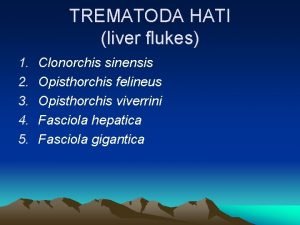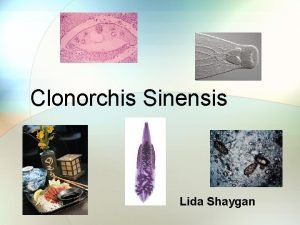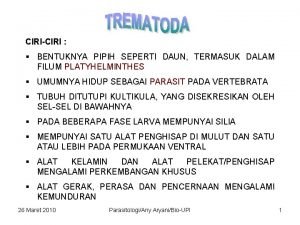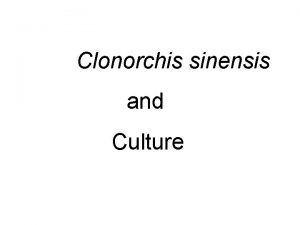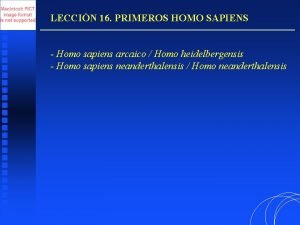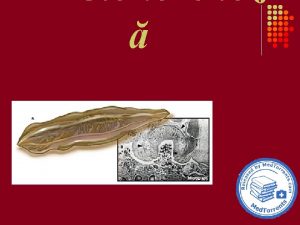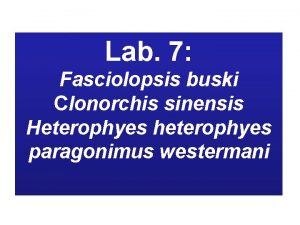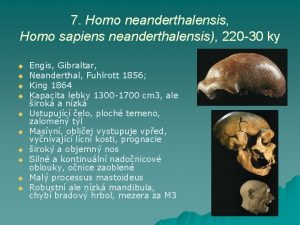Clonorchis sinensis and Culture History Homo sapiens have










- Slides: 10

Clonorchis sinensis and Culture

History • Homo sapiens have always been infected • Ancient corpse buried in 278 B. C. , West Han Dynasty in China • September 8, 1874, James Mc. Connell, Calcutta, India – Named Distoma sinens • Arthur Looss renamed Clonorchis sinensis 1895 • 1914 Harujiro Kobayashi • 1918 Masatomo Muto

Ancient Culture • • • Paleoparasitology, coprolites contain eggs, larvae, and DNA Clonorchis sinensis prevalent over 2300 years in Korea, China, and Japan Ming Dynasty corpse 1513 A. D. , West Han Dynasty 278 B. C. Taegu-city, South Korea soil samples from 668 -935 A. D. Fujiwara Palace in Japan, excavated ancient toilets 700 A. D. Increased Prevalence – Appearance of toilets lead to recycling of feces as fertilizer – Clonorchis sinensis increased in Japan, Buddhism introduced in 6 th century

Fujiwara Palace

Cultural Prevention • Chinese immigrants brought C. sinensis to California in early 1900 s • U. S. placed restrictions on immigration from Asia until 1937 • 1969 -1995 Korea Association for Parasite Eradication • 1984 mass treatment program undertaken in South Korea • 1995 Hazard Analysis and Critical Control Points (HACCP) • In China slaughter reservoir hosts (dogs and cats) • Praziquantel (1978) Albendazole (1987)

Cultural Promotion • • • Build latrines on fishponds and in ditches Wastewater is produced in large quantities due to rapid urbanization Fish farming is developing rapidly Fish exported to the Netherlands, Canada, Australia, and U. S. Traditional habits of eating raw fish

Fishpond Fertilizer

Cyprinus carpio, Carp Preparation of suhsi

Incidence • • • Survey in 1975, New York Chinatown C. sinensis most common parasite Kwangtung Province of South China 27% Red River Delta in Vietnam 50% incidence rate South Central Taiwan 34% incidence rate Incidence in Hawaii Worldwide 20 million people are infected

Interested In More • www. stanford. edu • www. cdc. gov • www. pubmedcentral. gov

